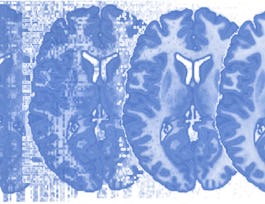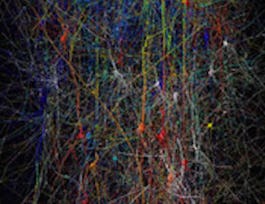The course "Neuroscience Methods" provides hands-on experience with cutting-edge neuroscience methods, equipping you to explore how the brain supports perception, attention, memory, and emotion. You'll gain proficiency in using tools such as neuroimaging, biometric systems, psycho-physiological sensors, and eye trackers to collect and analyze complex datasets. Learn to interpret data through advanced neural imaging and physiological measurement techniques, and critically assess the strengths and limitations of different methods.



Neuroscience Methods
This course is part of Neuromarketing Specialization


Instructors: Ian McCulloh
Sponsored by Coursera Learning Team
Recommended experience
What you'll learn
Learn to collect and analyze neuroimaging data related to perception, attention, memory, and emotion using advanced tools.
Analyze and interpret brain imaging data from fNIRS and apply statistical tests to understand cognitive functions.
Understand biometric, physiological, and qualitative measurement methods, evaluating their suitability for different research goals.
Analyze eye-tracking data to identify key metrics related to attention and information processing in cognitive and behavioral research.
Details to know

Add to your LinkedIn profile
10 assignments
December 2024
See how employees at top companies are mastering in-demand skills

Build your subject-matter expertise
- Learn new concepts from industry experts
- Gain a foundational understanding of a subject or tool
- Develop job-relevant skills with hands-on projects
- Earn a shareable career certificate


Earn a career certificate
Add this credential to your LinkedIn profile, resume, or CV
Share it on social media and in your performance review

There are 5 modules in this course
This course explores the neural anatomy and cognitive functions related to perception, attention, memory, and emotion. Students will gain hands-on experience in using neuroimaging, biometric, psycho-physiological, and eye-tracking tools to collect and analyze data. Emphasis is placed on interpreting complex datasets and understanding various measurement techniques, including brain imaging, physiological, and qualitative methods. Learners will evaluate the strengths and limitations of different measurement approaches in psychological and neuroscience research. By the end, learners will be equipped to select appropriate tools and methods for research design and data interpretation.
What's included
2 readings1 plugin
This module provides an introduction to brain imaging techniques, with a focus on neural imaging tools and functional Near-Infrared Spectroscopy (fNIRS). Through the lessons "Visualizing the Mind: An Introduction to Neural Imaging and fNIRS" and "fNIRS: Experiment and Analysis," learners will explore the fundamentals of brain imaging and the application of fNIRS in both experimental settings and data analysis.
What's included
6 videos2 readings3 assignments
In this module, you will learn to analyze brain imaging data collected via functional near-infrared spectroscopy (fNIRS). The module will also include a brief primer on statistical testing. If students have not taken a statistics course that involves hypothesis testing before, it is wise to review the primer and attend office hours to make sure they understand the necessary content before completing any assignments.
What's included
1 video1 reading2 assignments
This module introduces students to various biometric methods, focusing on eye-tracking technologies and other physiological measurement techniques. Through the lessons "Choosing Biometric Methods: Technologies and Techniques" and "Exploring Biometric Techniques: Eye Tracking Insights," learners will gain a deeper understanding of how biometric data is collected and analyzed, with a particular emphasis on the insights provided by eye-tracking technologies.
What's included
4 videos3 readings3 assignments
The "Eye Tracking Analysis" module focuses on the principles and techniques of analyzing eye-tracking data. Through the lesson "Mastering Tobii: Data Import, Visualization, and Metrics," students will learn how to import, visualize, and interpret eye-tracking data, gaining hands-on experience with the Tobii platform to analyze experimental results effectively.
What's included
3 videos1 reading2 assignments
Instructors


Offered by
Why people choose Coursera for their career




Recommended if you're interested in Health

Johns Hopkins University

Johns Hopkins University

Hebrew University of Jerusalem

Copenhagen Business School

Open new doors with Coursera Plus
Unlimited access to 10,000+ world-class courses, hands-on projects, and job-ready certificate programs - all included in your subscription
Advance your career with an online degree
Earn a degree from world-class universities - 100% online
Join over 3,400 global companies that choose Coursera for Business
Upskill your employees to excel in the digital economy


